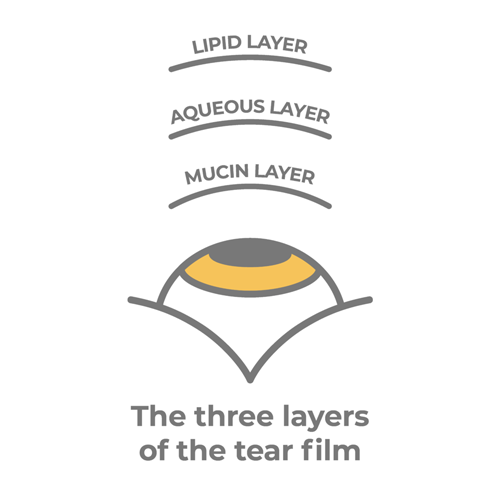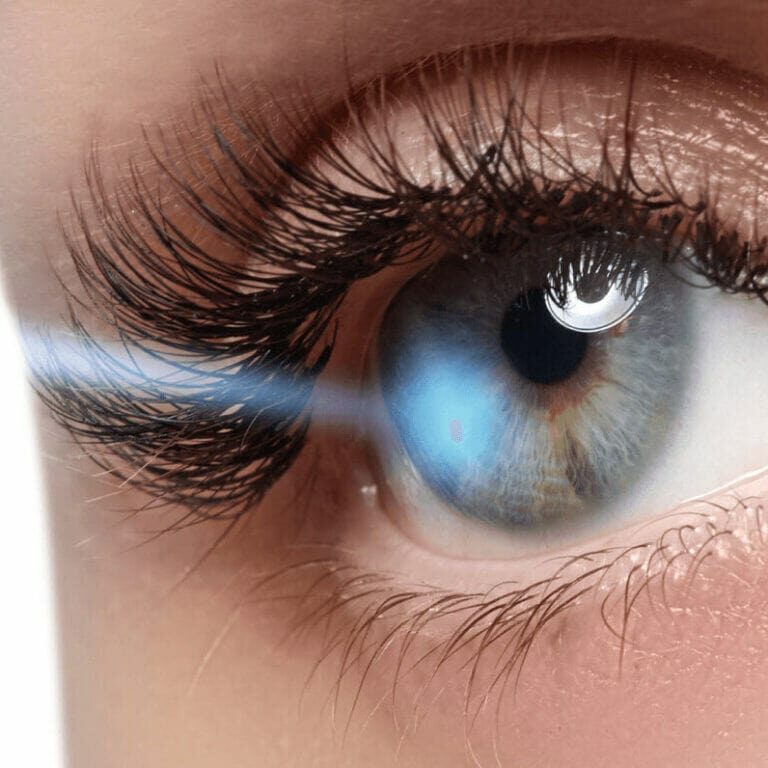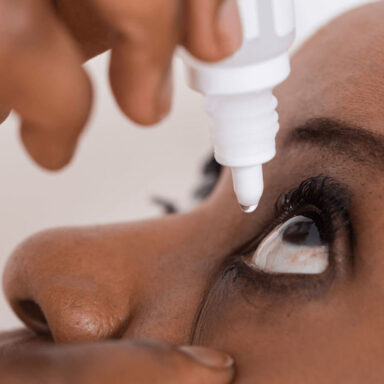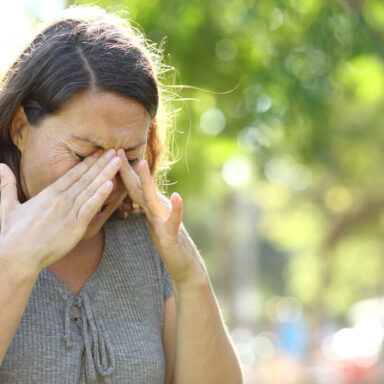If you have ever experienced sore, itchy, scratchy, or irritated eyes, eyes that feel heavy and tired at the end of the day, or blurry vision and sensitivity to light,1 you may find that you have dry eye, a condition which affects 1 in 4 people in the UK.2
Searching online for these symptoms can bring up a range of different terms and information that may lead you to feel confused about your condition. In this article we demystify some common myths and terms relating to dry eye and its symptoms, management and related conditions, to help bring some clarity to this frustrating condition and support you to seek the right treatment.
Dry eye, dry eye disease and dry eye syndrome are all terms for the same common eye condition, which occurs either as a result of the eyes not making enough tears, tears evaporating too quickly, or the eyes producing low-quality tears.2 The condition can be triggered and exacerbated by factors such as the menopause, contact lenses, uninterrupted screen use and eye surgery.3, 4, 5
Myth vs. Fact
Here we dispel some common dry eye myths and misconceptions.
Myth: “I have watery eyes which means I can’t be suffering from dry eye.”
Fact: Despite the term ‘dry eye’, excessive watering of the eyes is a common symptom of the condition.2 This is because dryness of the eye’s surface can over-stimulate the production of the watery component of your tears, causing your eyes to produce poor quality tears.
Myth: “The only way to manage my dry eye symptoms is by using eye drops.”
Fact: Dry eye can usually be managed with hydrating eye drops or artificial tears. However, there are many simple lifestyle changes you can also make to help improve dry eye symptoms. These include:
- Taking regular screen breaks
- Wearing dark sunglasses with high UV protection if you experience light sensitivity
- Drinking plenty of water
- Avoiding smoking, alcohol and caffeine
- Getting enough sleep
- Blinking more frequently when using screens or reading6
- Avoiding having air conditioning blowing directly at you
- Wearing a sleep mask to prevent worsening of symptoms at night
Myth: “All eye drops are the same.”
Fact: The main types of eye drops are artificial tears, allergy drops and anti-redness drops. Artificial tears are one of the most common treatments for dry eye. They are used as a tear replacement for insufficient tears, and can help to protect, hydrate, and promote healing of the eye.7
Dry eye can be irritated by preservatives found in some eye drops, so, if you opt for eye drops, it is generally recommended that you find a solution that is preservative-free.2 Many artificial tear products can be purchased in your local pharmacy or online without a prescription.
Myth: “Dry eye can’t cause permanent damage to my eyes.”
Fact: Although the condition is not usually serious, it is important to find the right treatment because if left untreated, in some cases, dry eye symptoms can get worse and may cause permanent eye damage over time.
If you have questions about dry eye or believe you are experiencing symptoms but have not yet been diagnosed, please talk to your pharmacist, optician, GP or ophthalmologist for support and advice.4
Jargon buster
Confused by some of the information you have read online? Check out the below definitions to some key dry eye terms.
- Artificial tears – eye drops used to help relieve dry, irritated eyes.
- Cornea – the clear outer layer at the front of the eyeball, which acts as a window to the eye.8
- Meibomian glands – tiny oil glands inside the eyelids, which produce oil to coat the surface of the eyes and stop them from drying out.6
- Photophobia – or light sensitivity, is a symptom that is prevalent in people who have dry eye.9
- Tear duct – a tiny passage running from the inner corner of the eyelids to the inside of the nose.10
- Tear film – tears are made up of three layers; the oily layer on the outside, the watery layer in the middle, and the inner, mucus layer. The three layers together are known as the tear film.11
The science behind tears

Tears are vital for protecting your eye’s surface (cornea) from bacteria and foreign objects, suppressing inflammation, promoting wound healing after injury, and maintaining eye comfort and vision. They consist of three separate layers that each have an important function11:
- an oil (lipid) layer which acts as a sealant to prevent evaporation11
- a water (aqueous) layer which keeps the eye lubricated and prevents infection11
- a mucin layer which nourishes the eye and helps the tears stick to the surface11
Conditions related to dry eye
There are several conditions and diseases that are associated with dry eye, including:
- Blepharitis, a common eye condition that makes eyelids swollen, red and crusty and can cause eyes to become dry.2, 12
- Glaucoma, a group of eye diseases that damage the optic nerve.13 Studies suggest around half of people who are being treated for glaucoma also have dry eye.14
- Nocturnal lagophthalmos, a condition where people don’t fully close their eyelids at night and therefore are unable to form a seal to hold in moisture.15
- Sjögren’s syndrome, an autoimmune rheumatic disease where the secretory glands develop a form of inflammation that causes symptoms such as dry eyes and a dry mouth.3, 16
- Thyroid disorders such as Graves’ disease and Hashimoto’s thyroiditis can cause eye problems including dry eye.17




